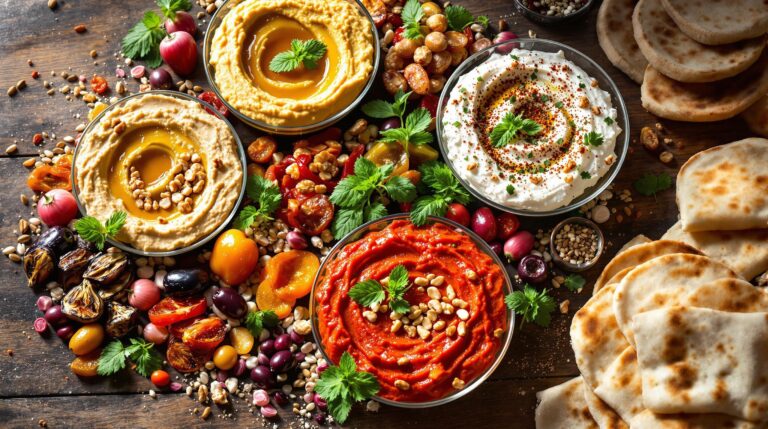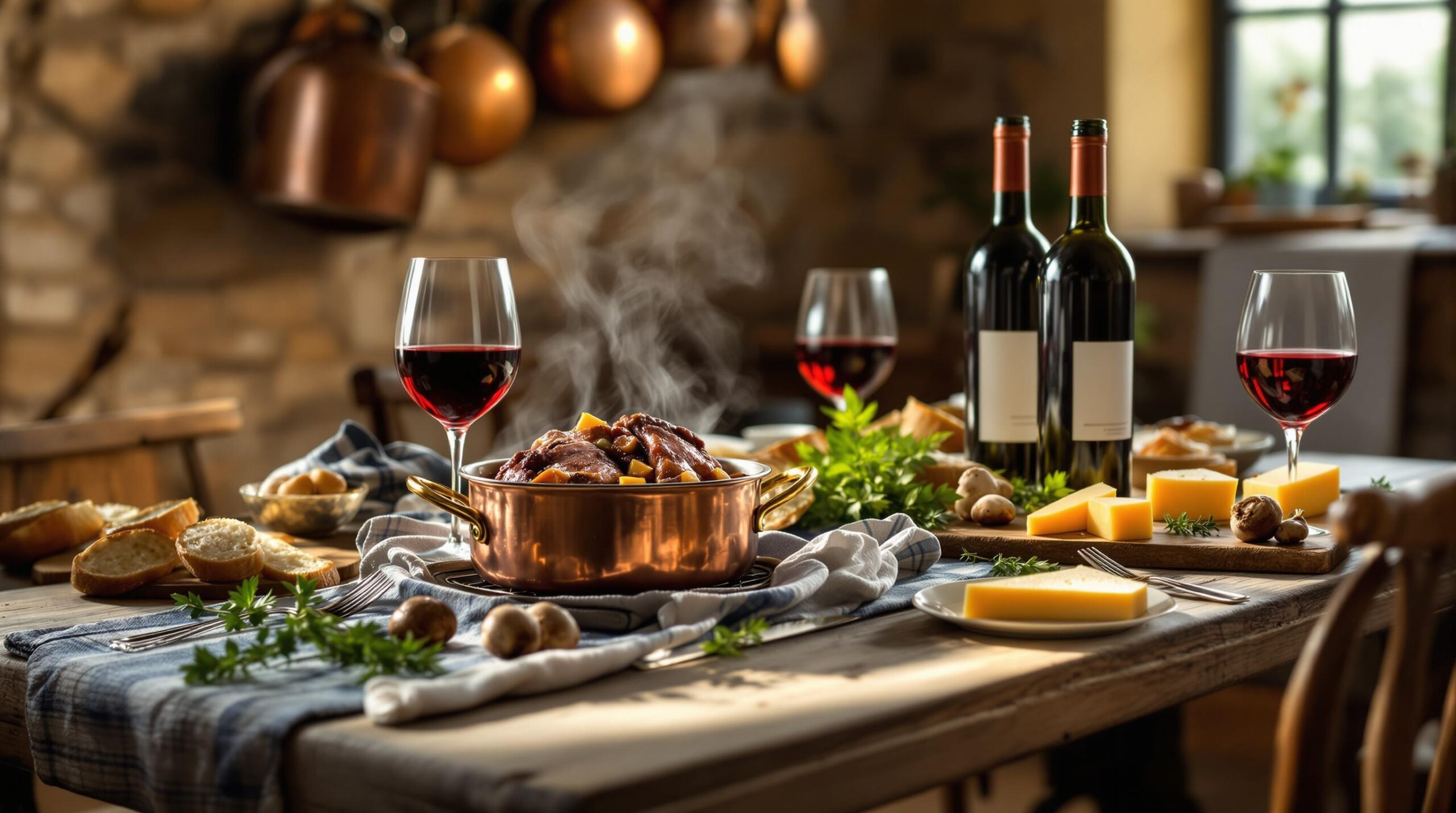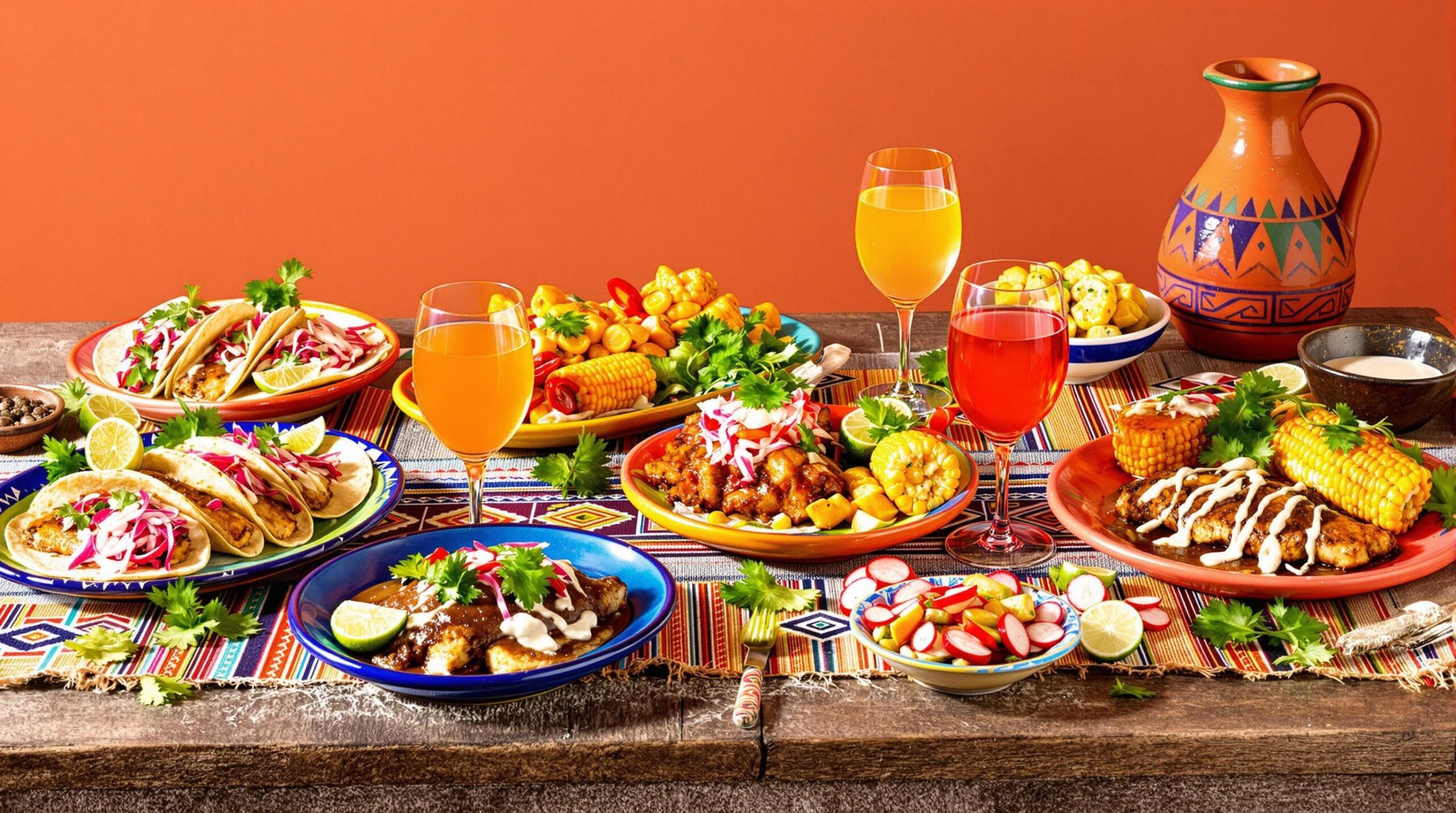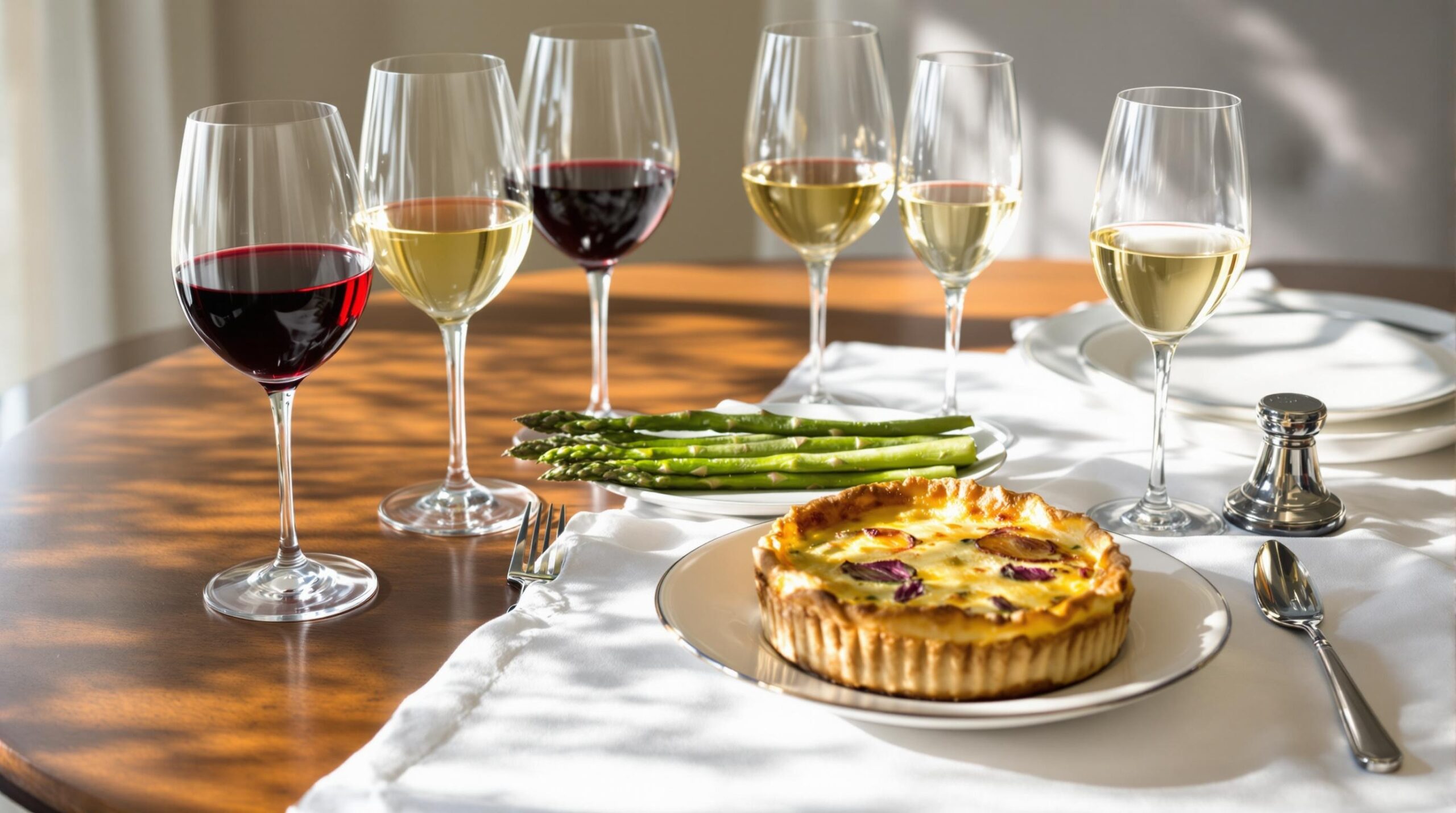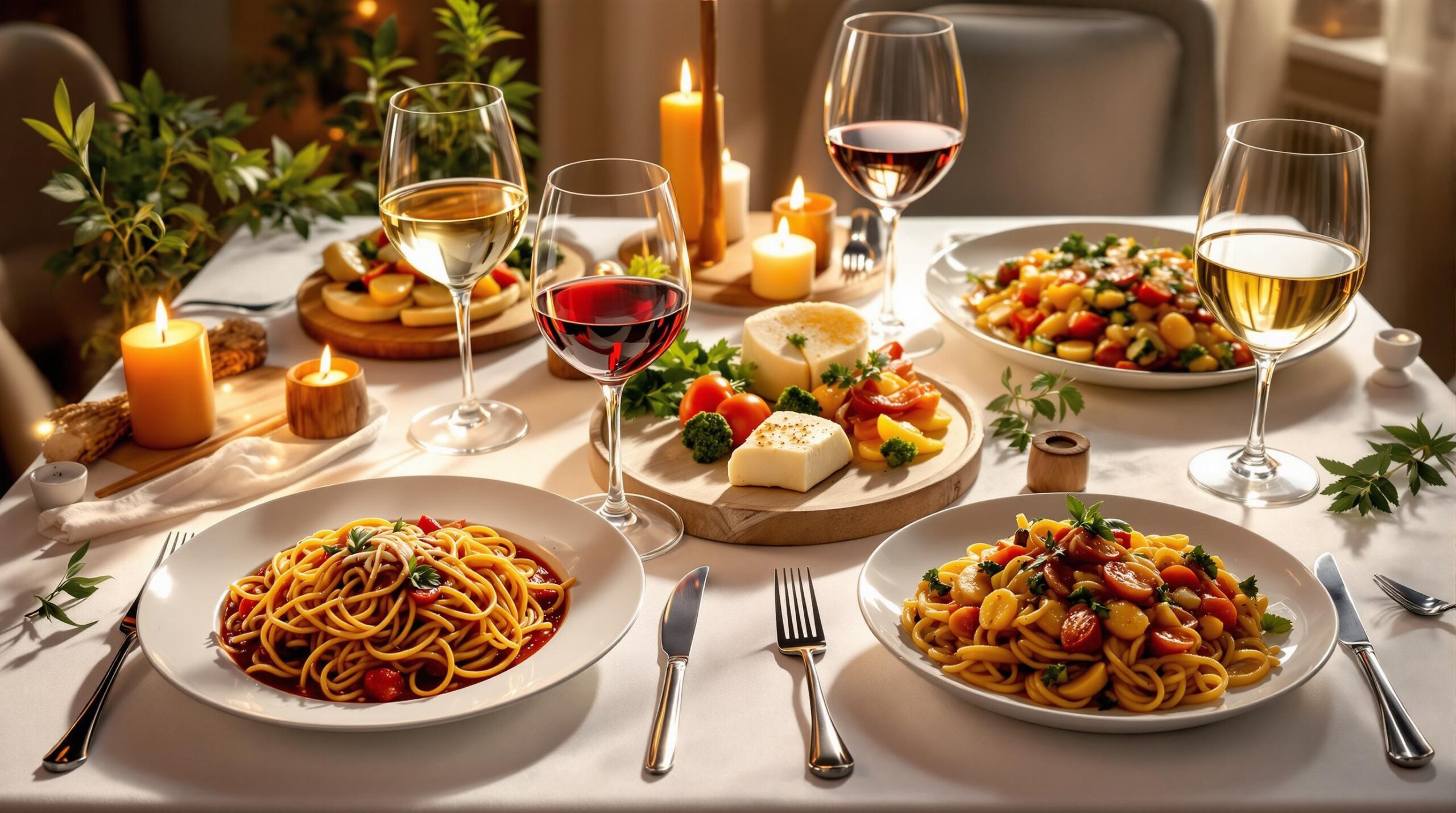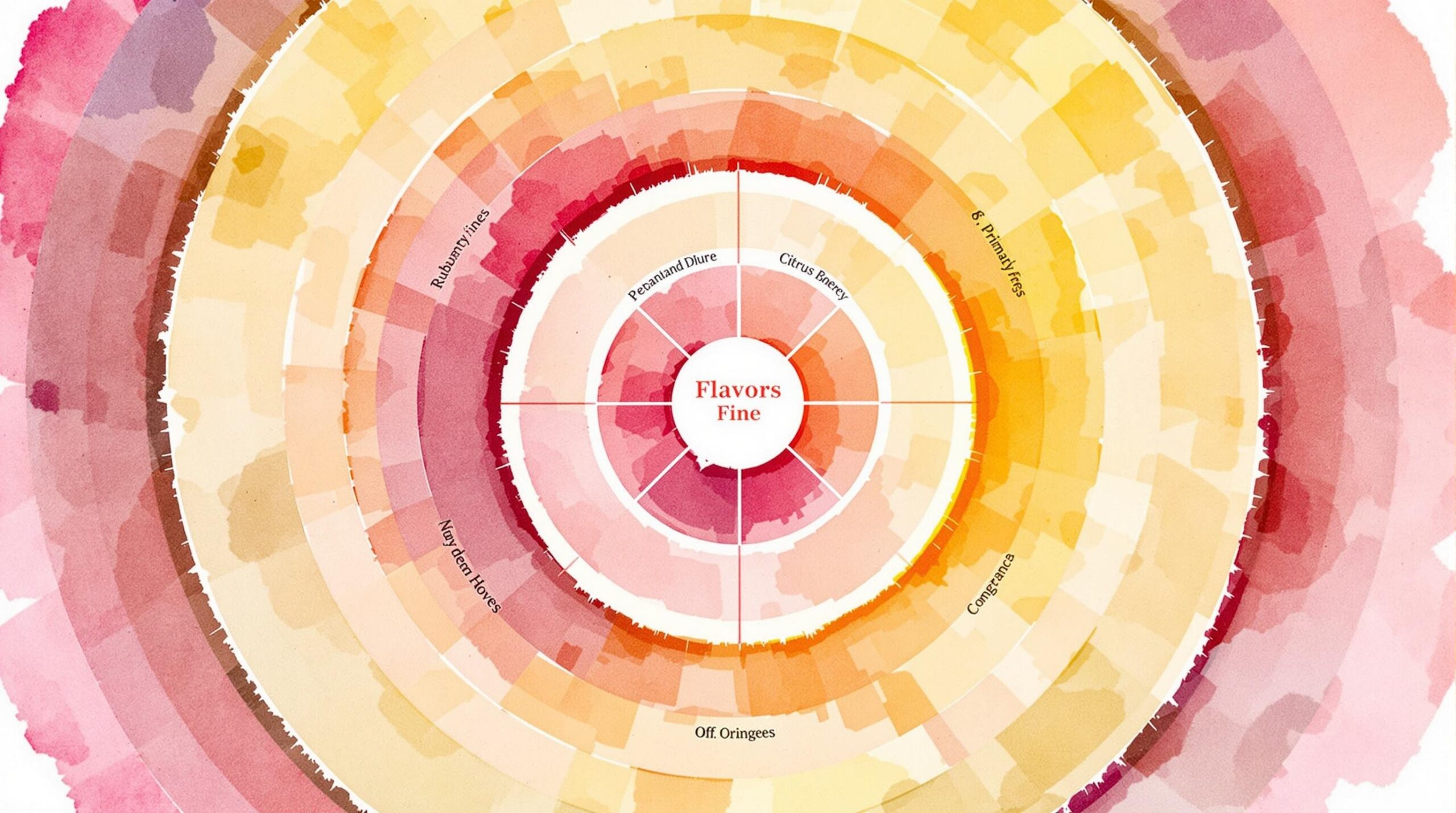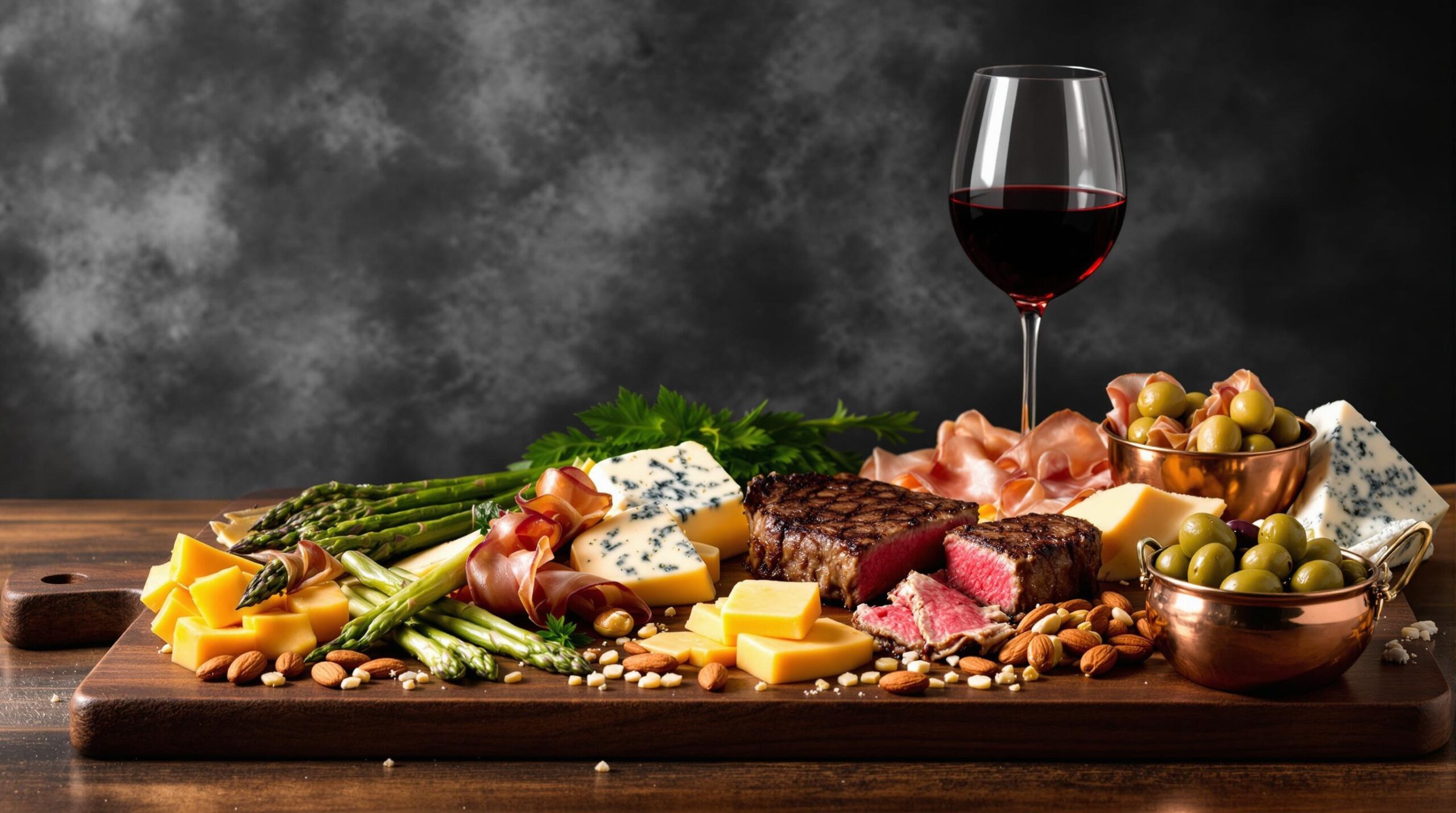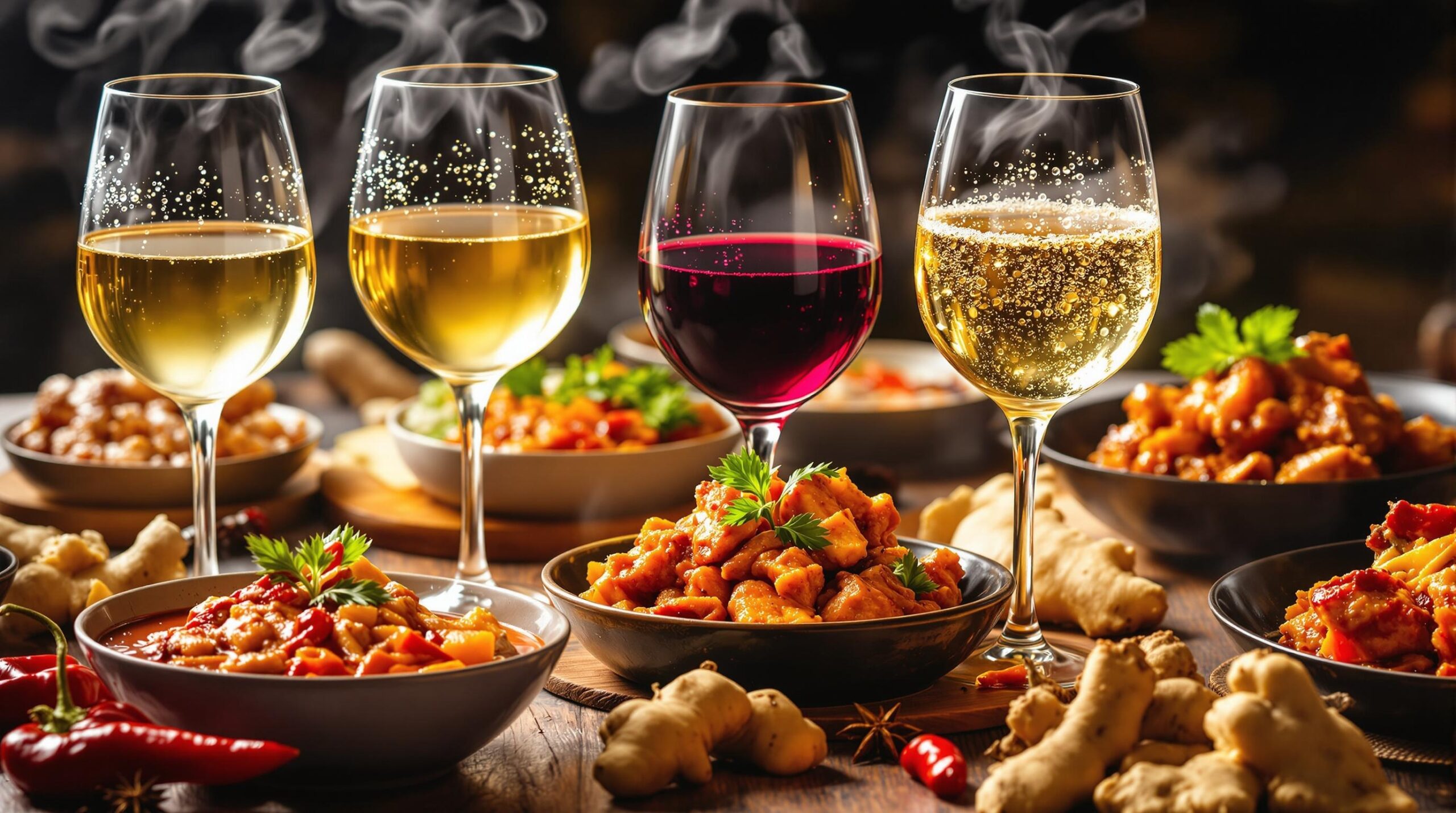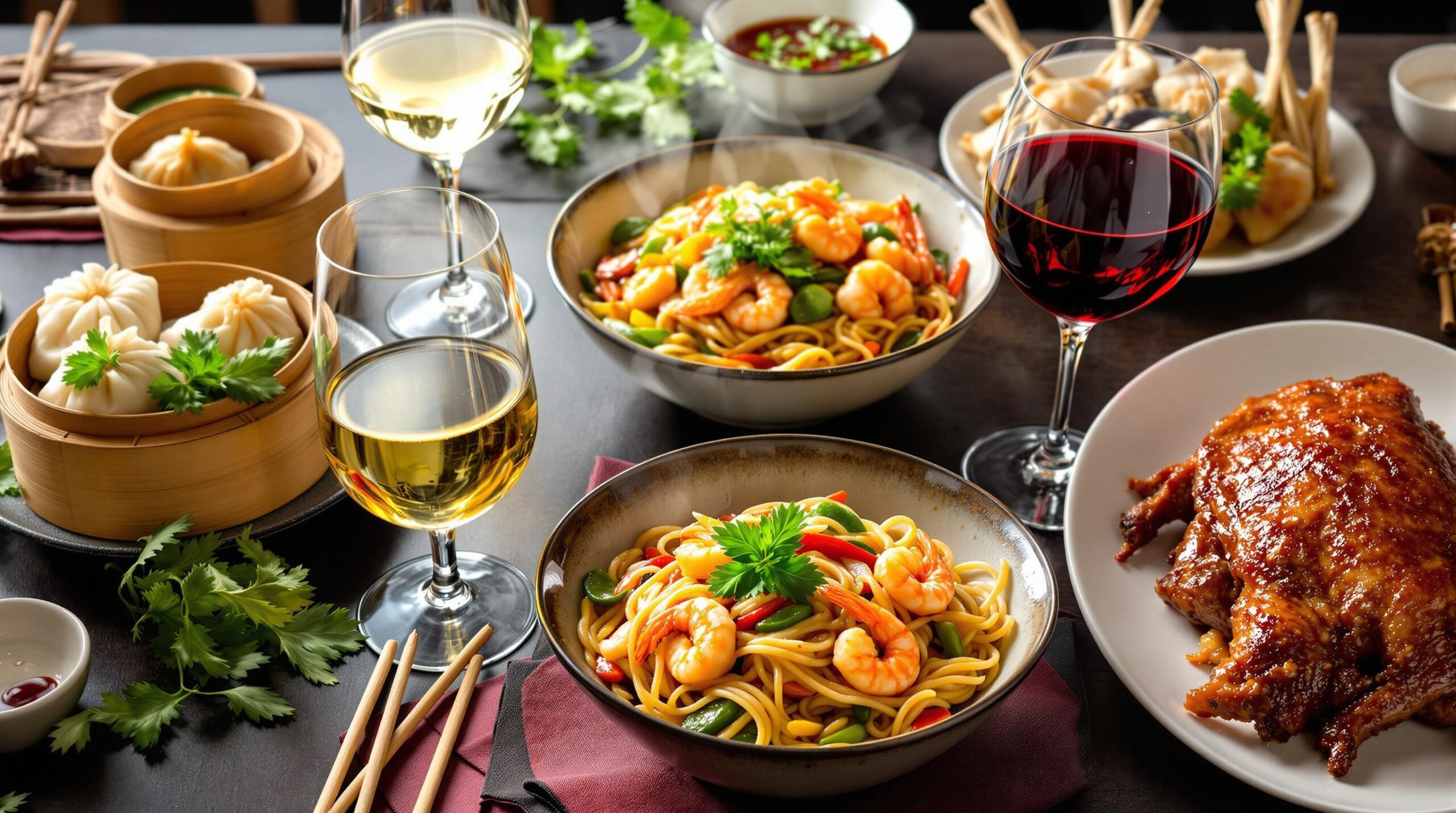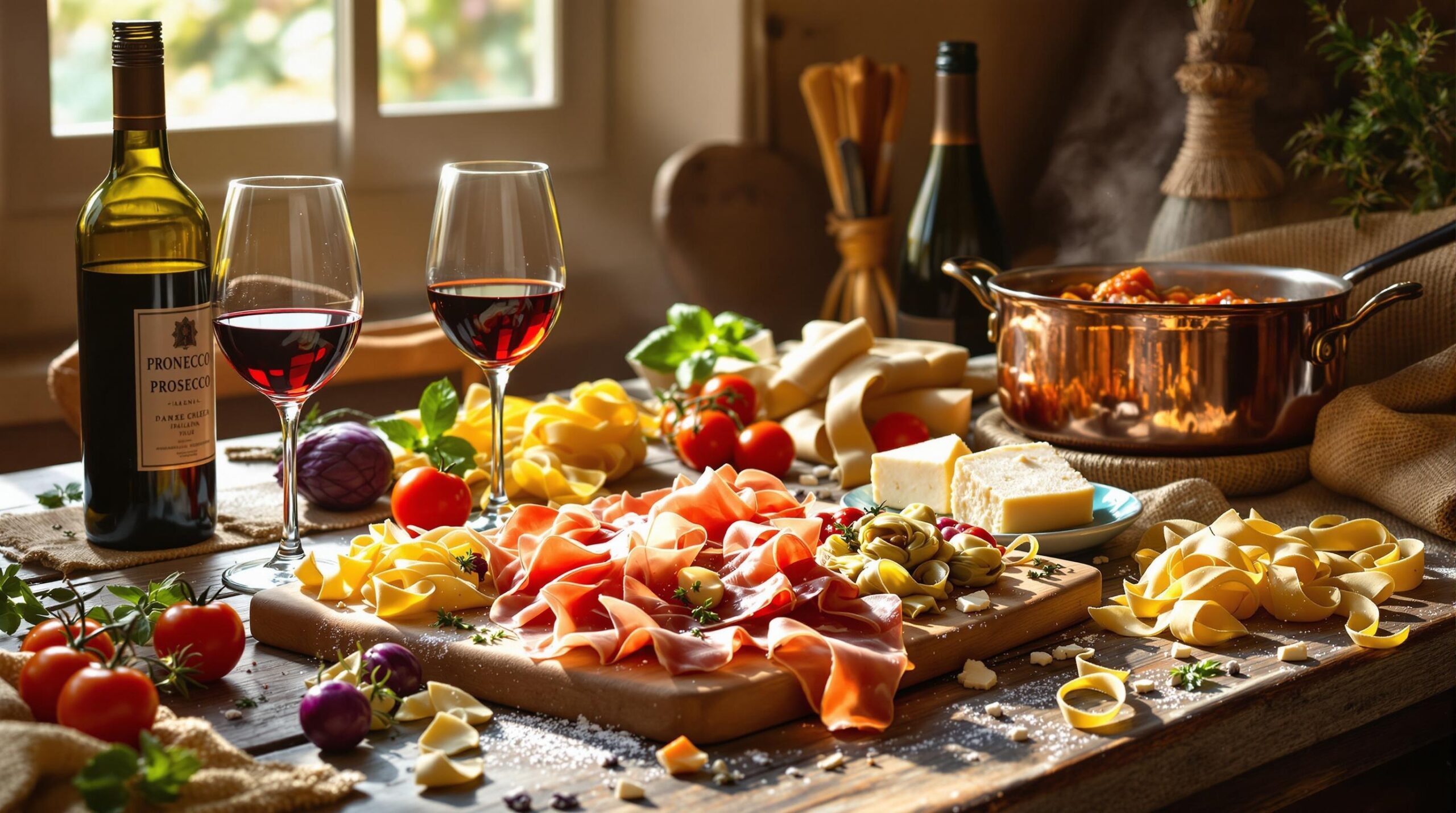Middle Eastern cuisine balances bold spices, fresh herbs, and rich textures. Understanding these flavor combinations helps create authentic dining experiences at home. This guide explores essential pairings and practical tips for matching Middle Eastern dishes with complementary beverages.
Essential Middle Eastern Flavor Profiles
- Warm Spices: Cumin, coriander, sumac, za’atar
- Fresh Herbs: Mint, parsley, dill, cilantro
- Aromatics: Garlic, onion, preserved lemon
- Sweet Elements: Pomegranate, dates, honey, rosewater
Classic Spice Combinations
| Base Ingredient | Complementary Spices |
|---|---|
| Lamb | Cumin, coriander, cinnamon |
| Chicken | Za’atar, sumac, turmeric |
| Vegetables | Baharat, mint, garlic |
Wine and Beverage Pairings
- Red Wine: Lebanese Cabernet blends with grilled meats
- White Wine: Aromatic whites like Riesling with mezze
- Non-alcoholic: Traditional mint tea, ayran, or tamarind juice
Regional Wine Suggestions
Look for wines from Lebanon’s Bekaa Valley or Morocco’s Atlas Mountains. Turkish wines from Anatolia offer unique local grape varieties that complement regional dishes.
Creating Balanced Mezze Platters
- Textures: Combine smooth hummus with crunchy falafel
- Temperatures: Mix warm pita with cool yogurt-based dips
- Flavors: Balance tangy tabbouleh with rich baba ganoush
Sample Mezze Combinations
Start with three dips: hummus, muhammara, and labneh. Add grilled vegetables, olives, and fresh herbs. Serve with warm flatbread and pickled vegetables for contrast.
Adapting Middle Eastern Flavors for Home Cooking
– Start with basic spice blends like za’atar or baharat
– Substitute hard-to-find ingredients with accessible alternatives
– Focus on technique: proper seasoning timing and heat control
– Stock pantry with essential Middle Eastern ingredients
Common Substitutions
| Original Ingredient | Accessible Alternative |
|---|---|
| Pomegranate molasses | Balsamic reduction with honey |
| Fresh za’atar herbs | Dried oregano and thyme |
| Orange blossom water | Orange zest and vanilla |
Entertaining with Middle Eastern Cuisine
– Design progressive menus starting with mezze
– Create visual impact through colorful presentation
– Arrange dishes for easy sharing and conversation
– Time dishes to serve at optimal temperatures
Sample Menu Flow
- Start: Cold mezze platters
- Middle: Warm appetizers and breads
- Main: Grilled meats or vegetarian centerpieces
- Finish: Traditional sweets and mint tea
Modern Interpretations and Fusion Ideas
– Incorporate Middle Eastern flavors into familiar dishes
– Create fusion plates that respect traditional elements
– Use Middle Eastern spices in non-traditional applications
– Balance innovation with authenticity
Fusion Examples
- Za’atar-crusted salmon with labneh sauce
- Sumac-spiced roasted vegetables
- Pomegranate-glazed chicken wings
- Harissa mac and cheese
Tips for Building Your Middle Eastern Pantry
– Start with quality basics: olive oil, tahini, bulgur
– Source spices from specialty markets or online vendors
– Store herbs and spices properly to maintain freshness
– Invest in key equipment like a mortar and pestle
Storage Guidelines
| Item | Storage Method | Shelf Life |
|---|---|---|
| Ground spices | Airtight container, dark place | 6 months |
| Tahini | Refrigerated after opening | 6-12 months |
| Dried herbs | Airtight container, dark place | 1 year |
Quick Guide to Middle Eastern Food and Wine Pairings
Common FAQs About Middle Eastern Food & Wine
- What wines pair well with hummus?
Light, crisp whites like Pinot Grigio or unoaked Chardonnay complement hummus’s creamy texture. - Which wine works with lamb shawarma?
Full-bodied reds like Syrah or Lebanese Cabernet Sauvignon match the rich, spiced meat. - Can I serve wine with falafel?
Light to medium-bodied whites such as Sauvignon Blanc or Vermentino pair well with herb-filled falafel. - What wine suits tabbouleh?
Fresh, herbaceous whites like Grüner Veltliner complement the parsley and mint. - Best wine for kebabs?
Red meat kebabs: Grenache or Syrah
Chicken kebabs: Rosé or light reds
Fish kebabs: Dry whites like Assyrtiko - Which wine matches baba ganoush?
Smoky reds like Spanish Tempranillo enhance the roasted eggplant flavors. - Wine pairing for baklava?
Sweet dessert wines like Muscat or Turkish late-harvest wines balance the honey-sweetness. - What about spicy dishes?
Off-dry Riesling or Gewürztraminer help cool spicy heat while adding complementary flavors. - Wine for mezze platters?
Versatile rosé or light-bodied reds work across various small plates. - Local wine recommendations?
Lebanese Chateau Musar or Israeli Yarden wines offer authentic regional pairings.
Essential Pairing Tips
- Consider spice levels – Choose wines with lower alcohol for spicier dishes
- Match intensity – Bold foods need bold wines, delicate dishes need lighter wines
- Think about cooking methods – Grilled foods pair well with smoky reds
- Balance acidic dishes – High-acid wines complement lemony or yogurt-based foods
Regional Wine Suggestions
| Country | Notable Wines |
|---|---|
| Lebanon | Chateau Musar, Chateau Ksara |
| Israel | Yarden, Carmel Winery |
| Turkey | Kavaklidere, Doluca |
Home Entertainment Tips
- Temperature matters – Serve reds slightly cool (60-65°F) in warmer climates
- Glassware choices – Universal wine glasses work well for most Middle Eastern wine pairings
- Serving sequence – Start with lighter mezze and whites, move to heavier dishes and reds
Alternative Beverages
For non-alcoholic options:
- Ayran – Traditional yogurt drink
- Mint tea – Refreshing with spicy dishes
- Pomegranate juice – Rich alternative for red wine pairings
Remember that personal taste preferences matter most when pairing wines. These guidelines offer starting points for exploring Middle Eastern cuisine with wine. Experiment with different combinations to find your favorite matches.

